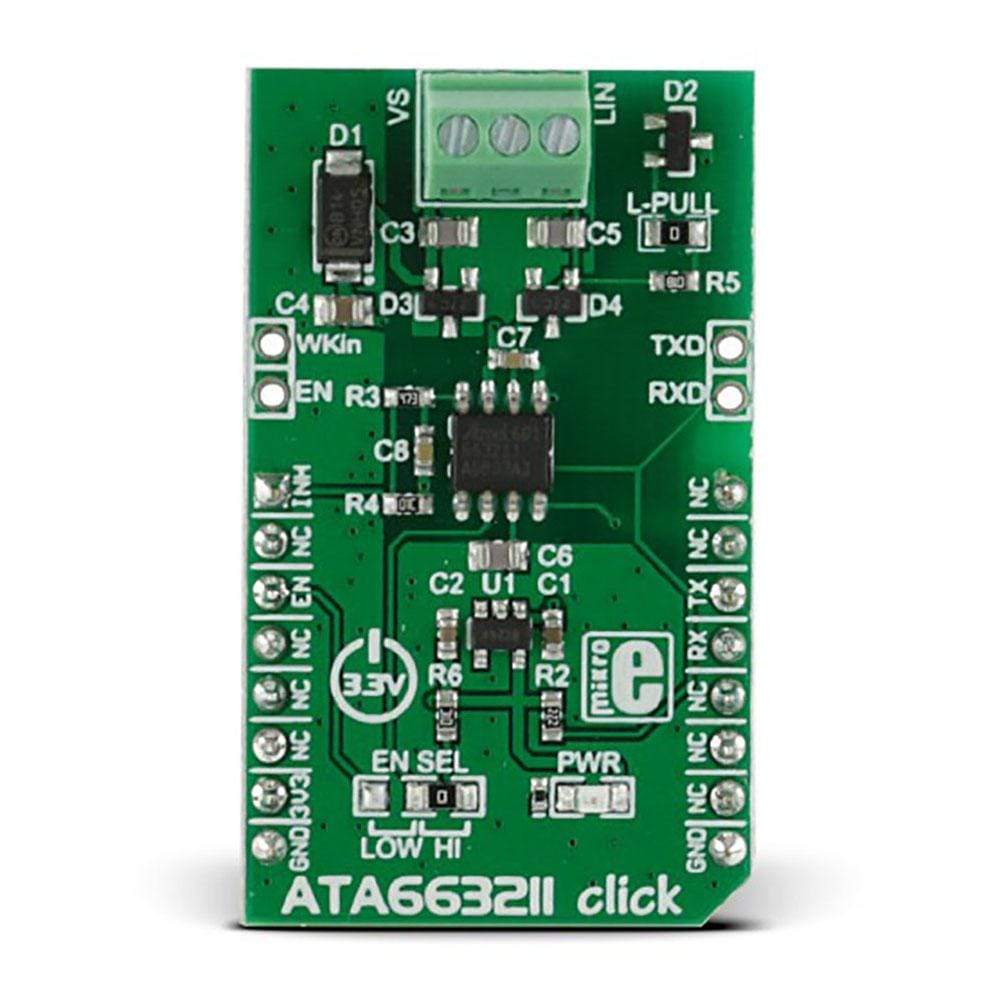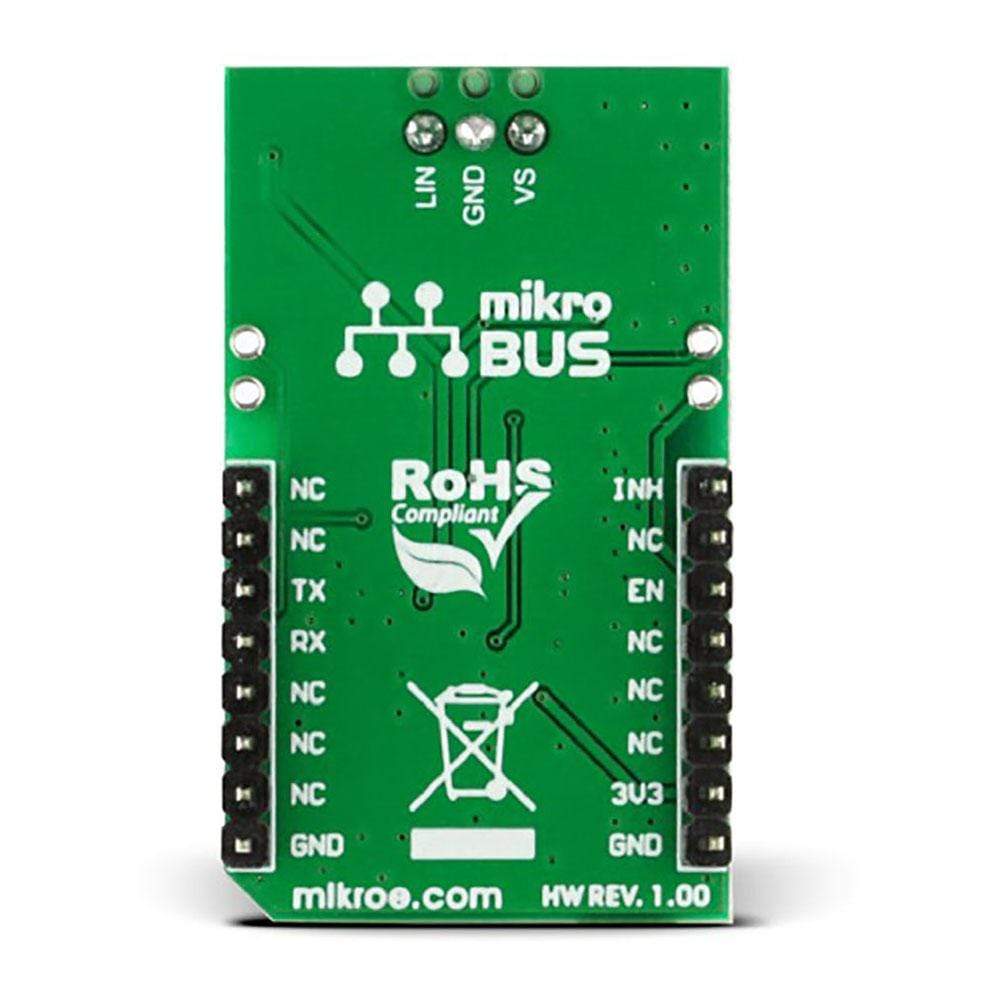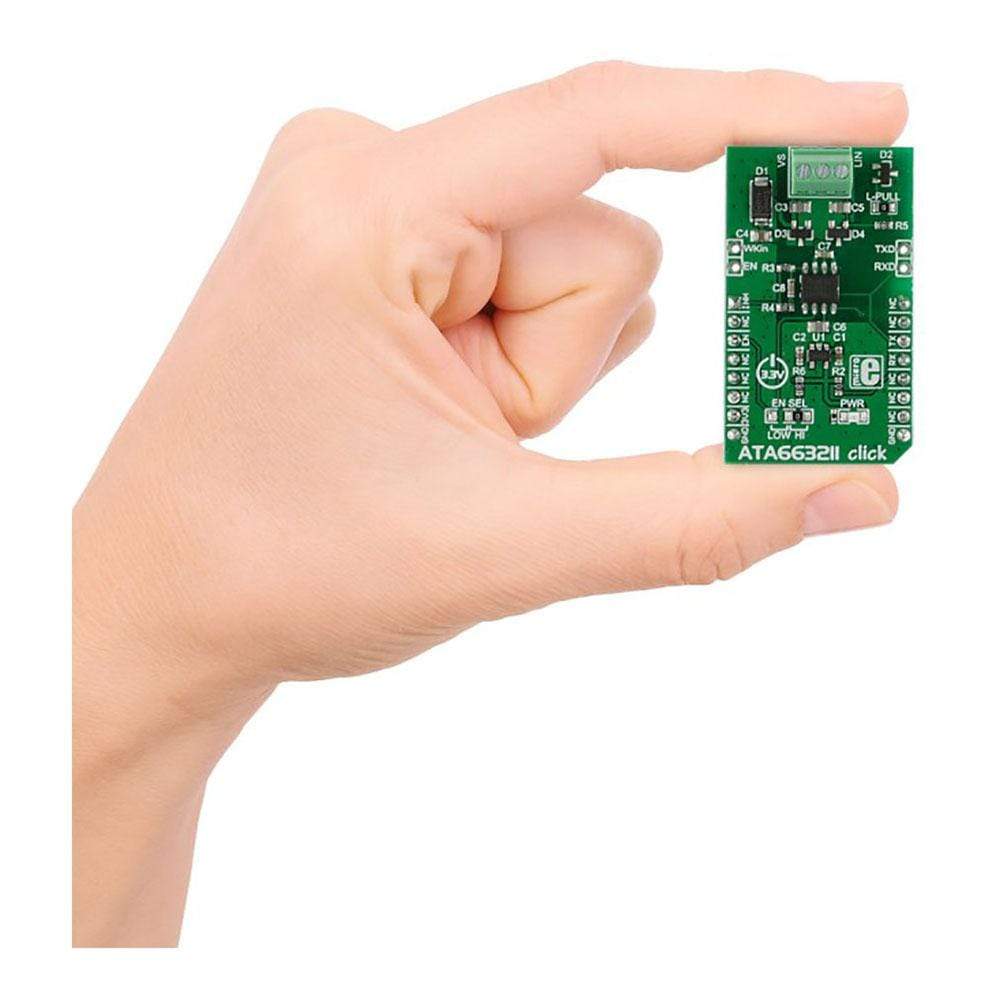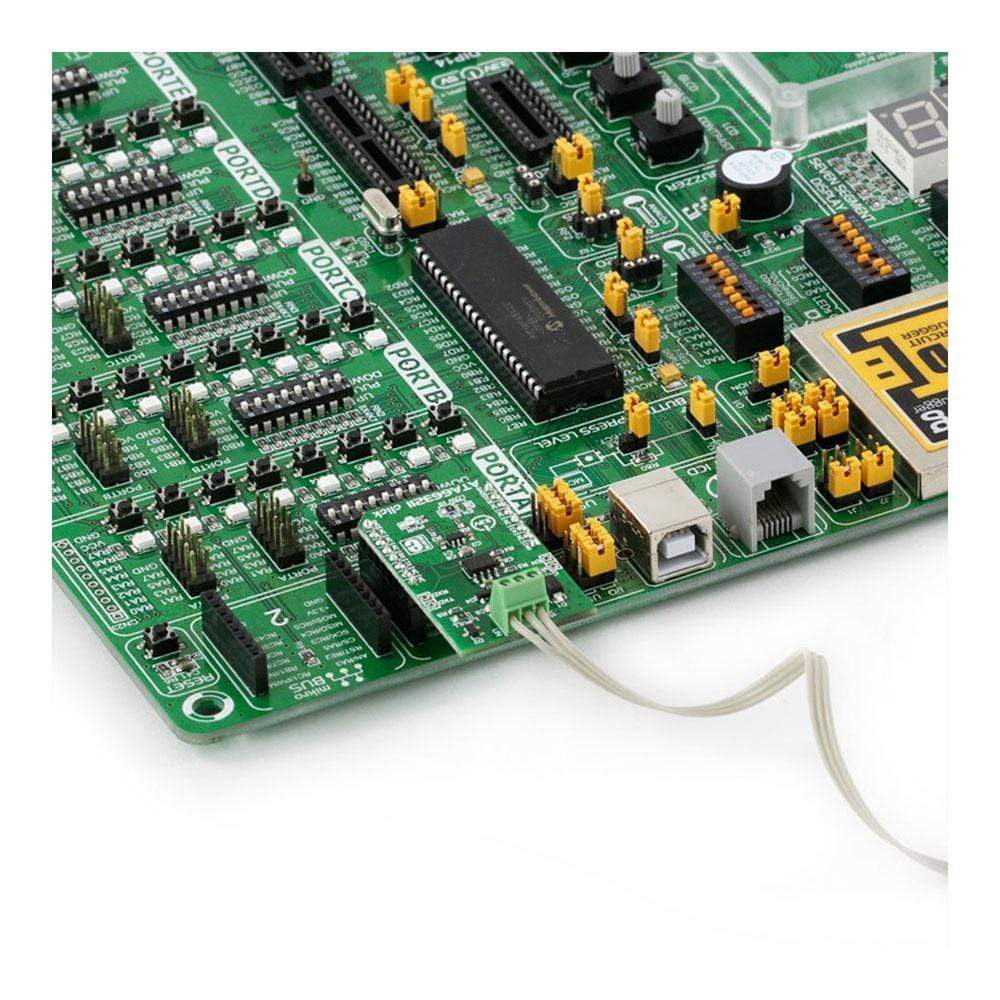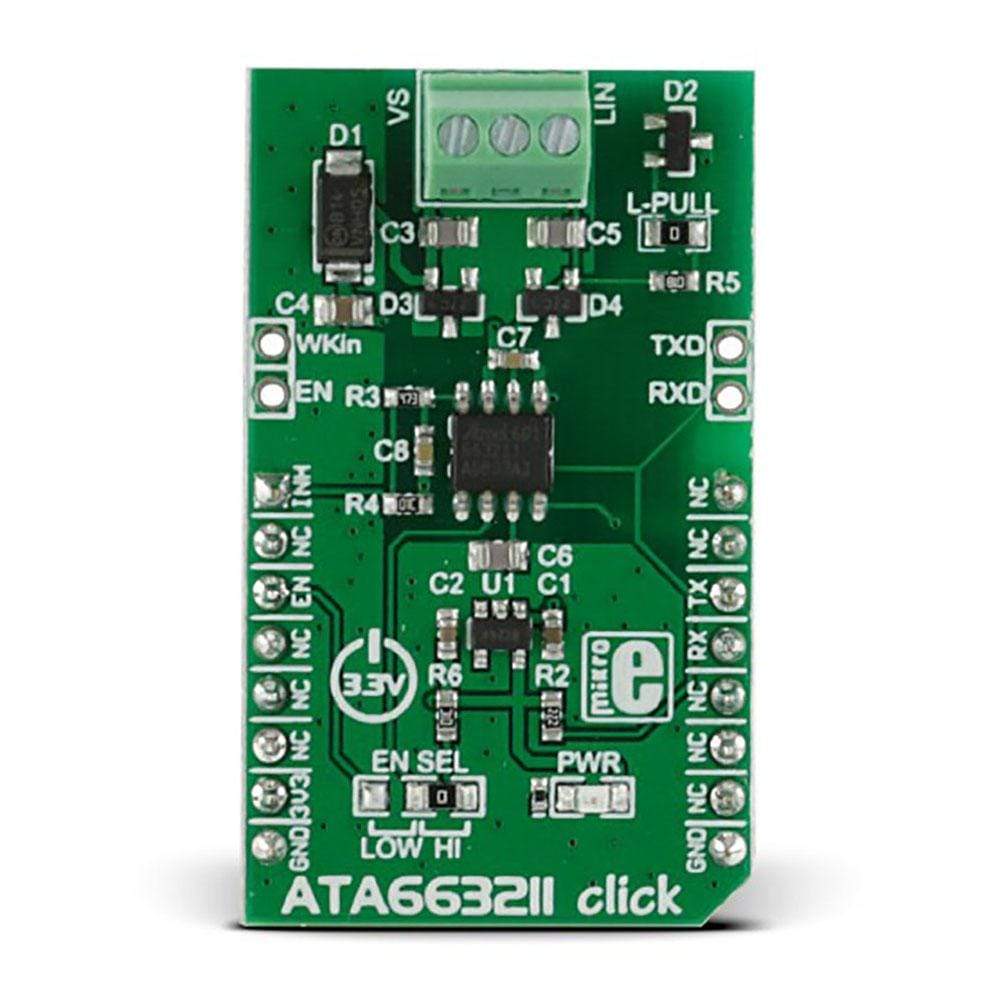
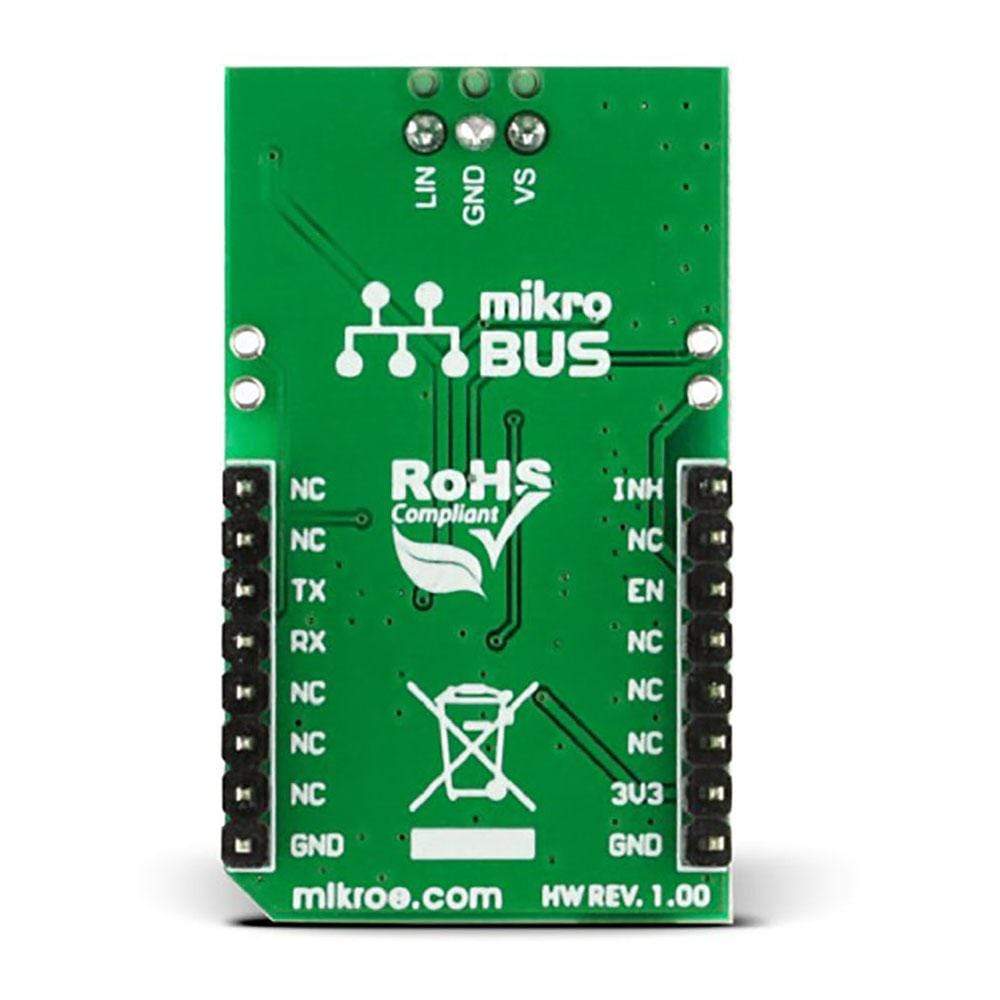
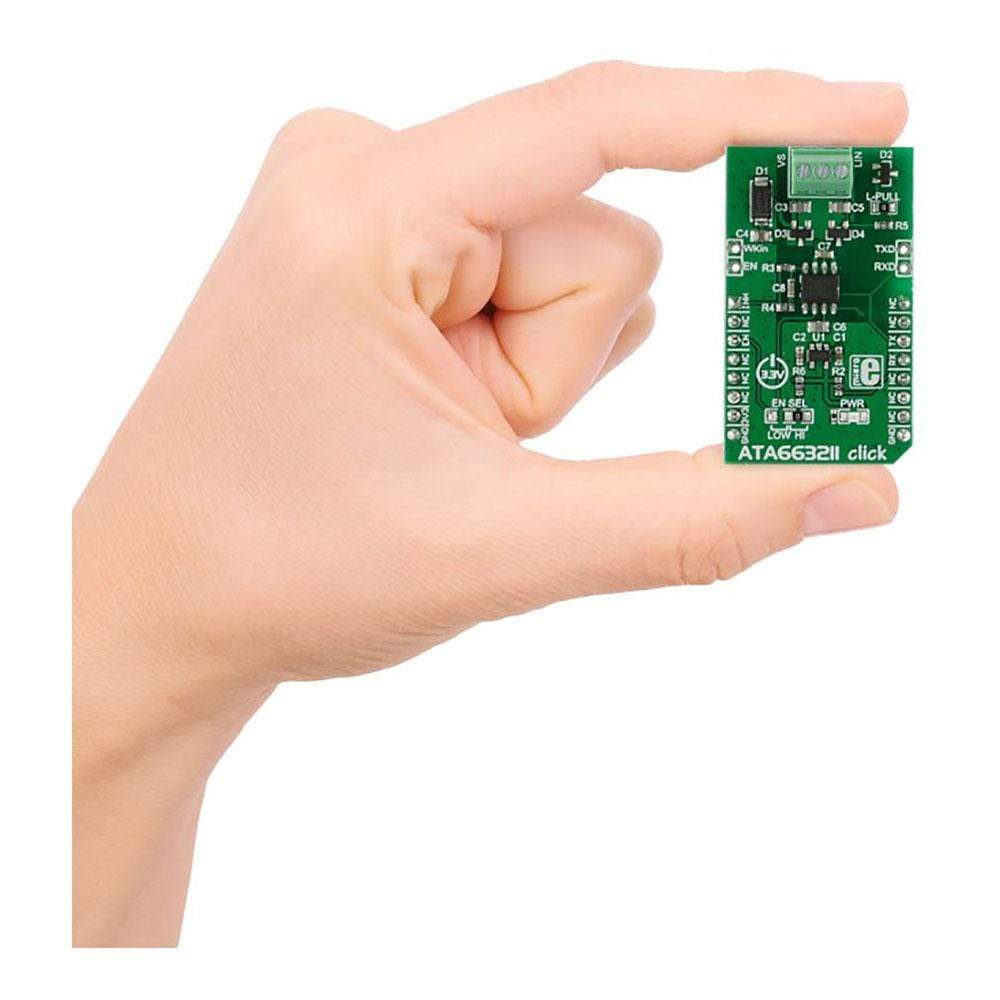
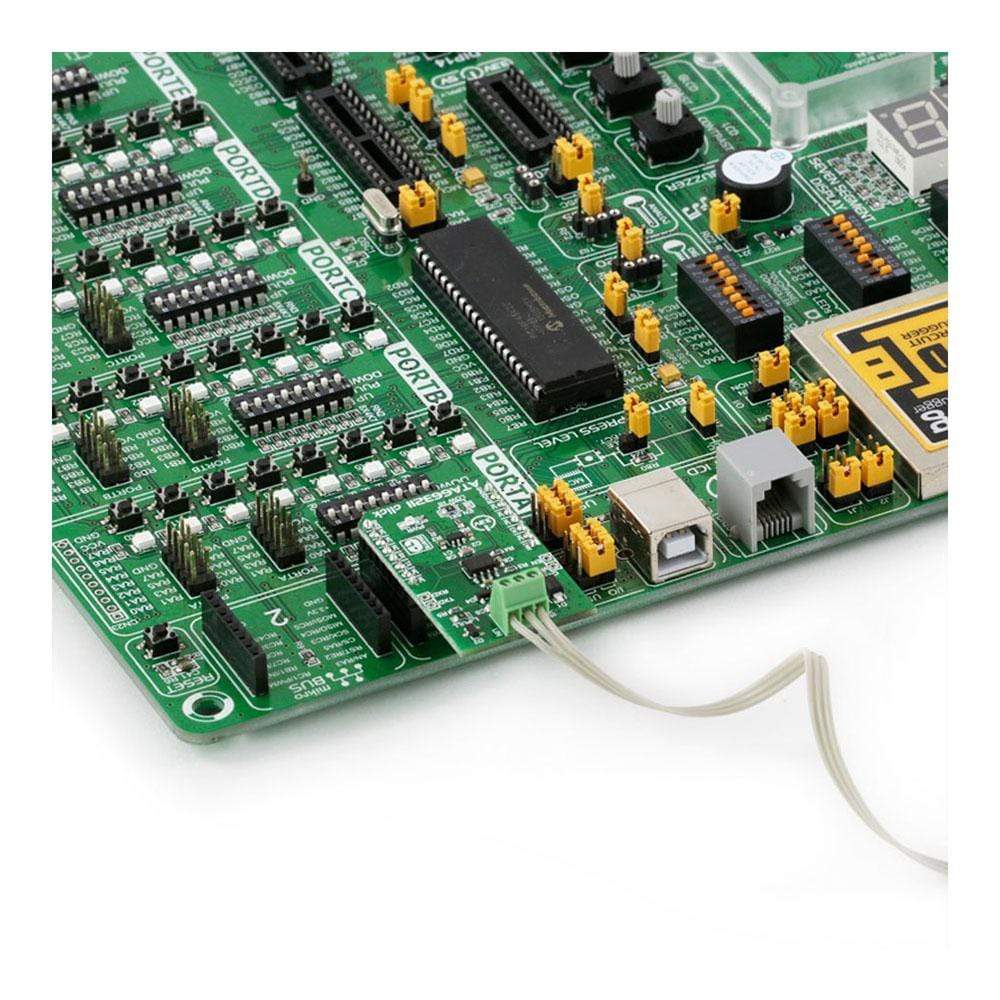
Key Features
Overview
The ATA663211 Click Board™ carries an Atmel LIN transceiver IC designed to handle low-speed data communication in vehicles and in industrial applications with electrically harsh environments. The LIN connection is established by attaching wires to the on-board screw terminals.
Downloads
Das ATA663211 Click Board™ verfügt über einen Atmel LIN-Transceiver-IC, der für die langsame Datenkommunikation in Fahrzeugen und in industriellen Anwendungen mit elektrisch rauen Umgebungen ausgelegt ist. Die LIN-Verbindung wird durch Anbringen von Drähten an den integrierten Schraubklemmen hergestellt.
| General Information | |
|---|---|
Part Number (SKU) |
MIKROE-2335
|
Manufacturer |
|
| Physical and Mechanical | |
Weight |
0.03 kg
|
| Other | |
Country of Origin |
|
HS Code Customs Tariff code
|
|
EAN |
8606015079349
|
Warranty |
|
Frequently Asked Questions
Have a Question?
Be the first to ask a question about this.

